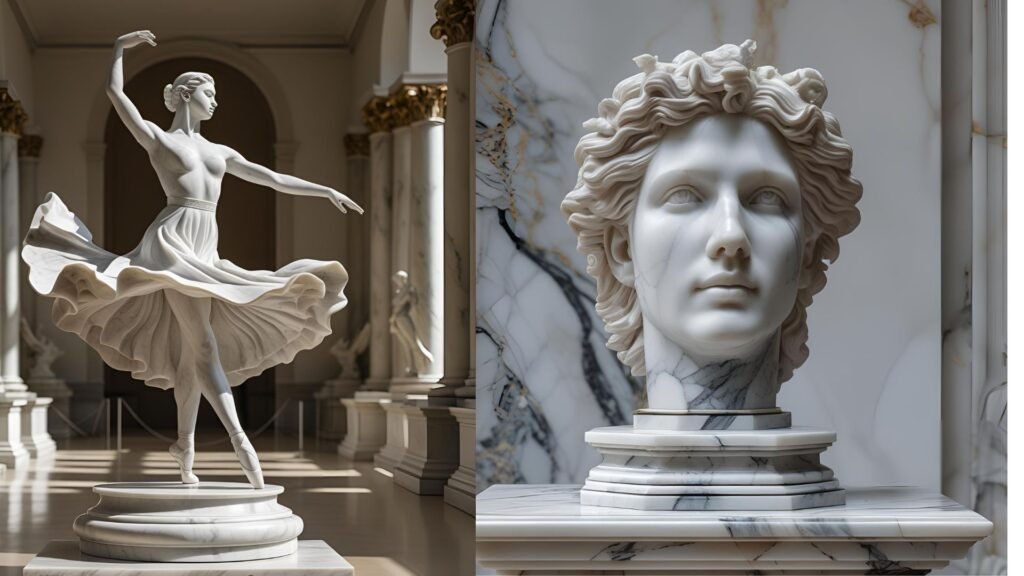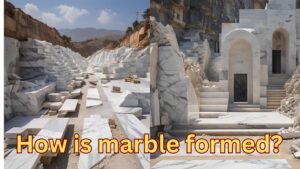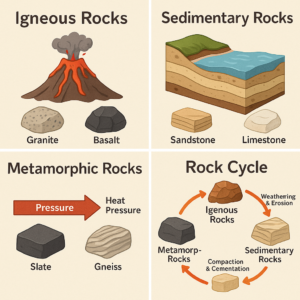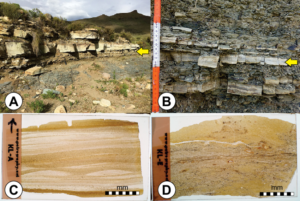Marble, the classic, graceful stone that is used in sculptures, palaces, temples, and contemporary residences, has an interesting history. You may appreciate the cold feel of marble or its veined appearance, but have you ever pondered how marble is made? Unexpectedly, it’s a tale of metamorphosis that takes place over millions of years deep beneath the surface of the Earth. In this article we will discuss formation of marble step by step.
Step 1: It All Starts with Limestone
Marble’s journey begins with limestone, a sedimentary rock that formed by accumulation of marine life remains like shells, coral, and microscopic organisms on the ocean floor. Over time, these remains are compacted and cemented together by minerals like calcite.Limestone is pretty soft and porous compared to marble. It’s also rich in calcium carbonate (CaCO₃), which plays a key role in the transformation to marble later on.
Step 2: Burial Beneath Layers of Earth
As more and more sediment piles up, the limestone gets buried deeper under layers of rock and soil. This is where pressure starts to come into play. The deeper the rock gets buried, the higher the temperature and pressure it experiences. This stage can take millions of years.
Step 3: Introduction of Heat and Pressure
In this step, metamorphism comes into play. When limestone is subjected to high pressure and temperature, usually between 600°C to 1,200°C and deep within the crust of Earth, it begins to change. This can happen due to:
- Tectonic forces (when Earth’s plates collide or shift)
- Burial under thick rock layers
- Contact with hot magma intrusions
These forces cause the calcite crystals in the limestone to recrystallize. That means the original tiny calcite grains grow into larger, interlocking crystals. The rock becomes denser, less porous, and gains the characteristic shine and hardness of marble. This is the moment limestone “graduates” into marble.

Step 4: Impurities Create Color and Patterns
Pure marble is usually white because it’s made almost entirely of calcite. But most of the marble we see is not pure white. It’s streaked with grey, green, pink, or black veins because impurities in the original limestone such as iron oxide, clay, sand, or bituminous materials, get restructured during metamorphism.These foreign materials influence the final appearance of the marble:
- Iron can create red or yellow streaks
- Carbon can create gray or black hues
- Serpentine can add a green color
- Clay minerals can contribute to swirls and veining
So every piece of marble tells a slightly different story depending on where and how it formed.
Step 5: Uplift and Exposure
Now that marble is fully formed beneath the Earth’s surface, it’s still hidden, locked within the Earth’s crust. But over millions of years, geological processes like mountain-building and erosion bring these rocks back to the surface.
Tectonic forces can push marble upwards, sometimes forming entire mountain ranges, like the famous Carrara marble quarries in Italy. Erosion from wind, water, and glaciers helps to remove the overlying rock, gradually exposing the marble for mining. Once it reaches the surface or near-surface levels, we humans can finally extract and admire it.
Step 6: Quarrying and Cutting
When marble is discovered, it’s extracted using a method called quarrying. This is a delicate process because marble is valuable, and large blocks are preferred for commercial use. Modern techniques involve:
- Wire saws
- Diamond-tipped cutting tools
- Controlled blasting (in some cases)
Huge marble blocks are cut out, then transported to processing plants where they are sliced into slabs, polished, and prepared for use in construction, sculpture, or design.
Step 7: Usage and Reuse
Marble is prized not just for its beauty, but for its versatility. Some common uses include:
- Sculpture (Think Michelangelo’s David)
- Architecture (Taj Mahal, Parthenon)
- Flooring and countertops
- Monuments and gravestones
Even marble waste or scrap from cutting is reused as crushed stone, calcium supplements, or even cosmetic fillers. In a way, marble continues to evolve even after it’s mined.







One thought on “How is Marble Formed Step by Step?”